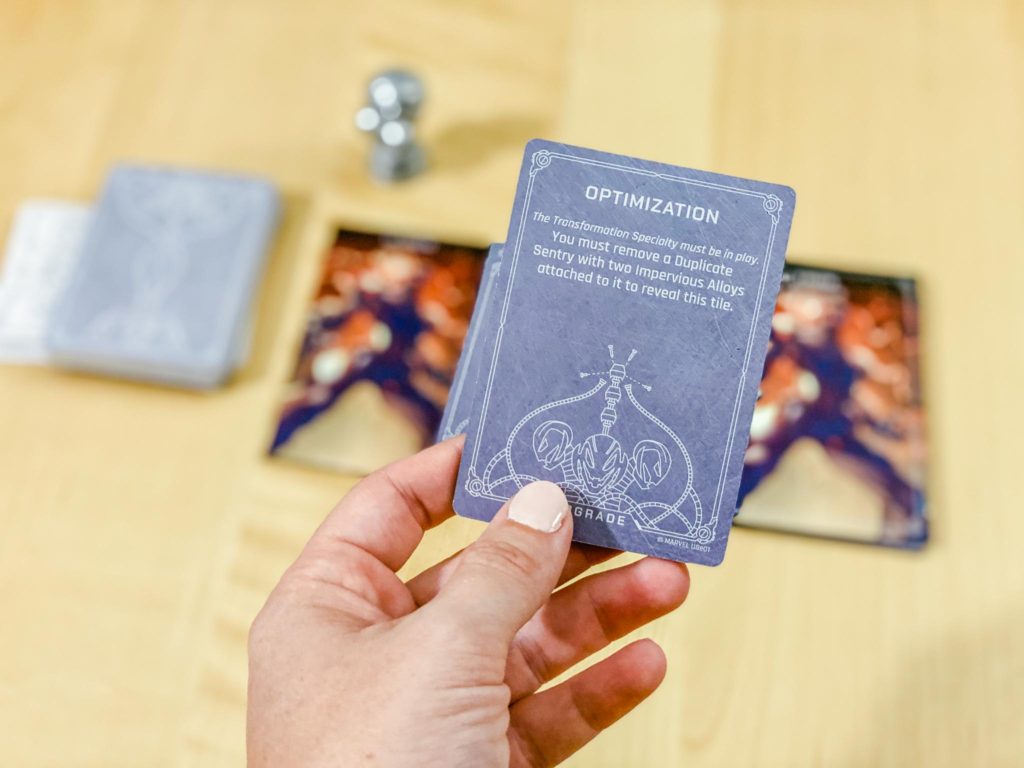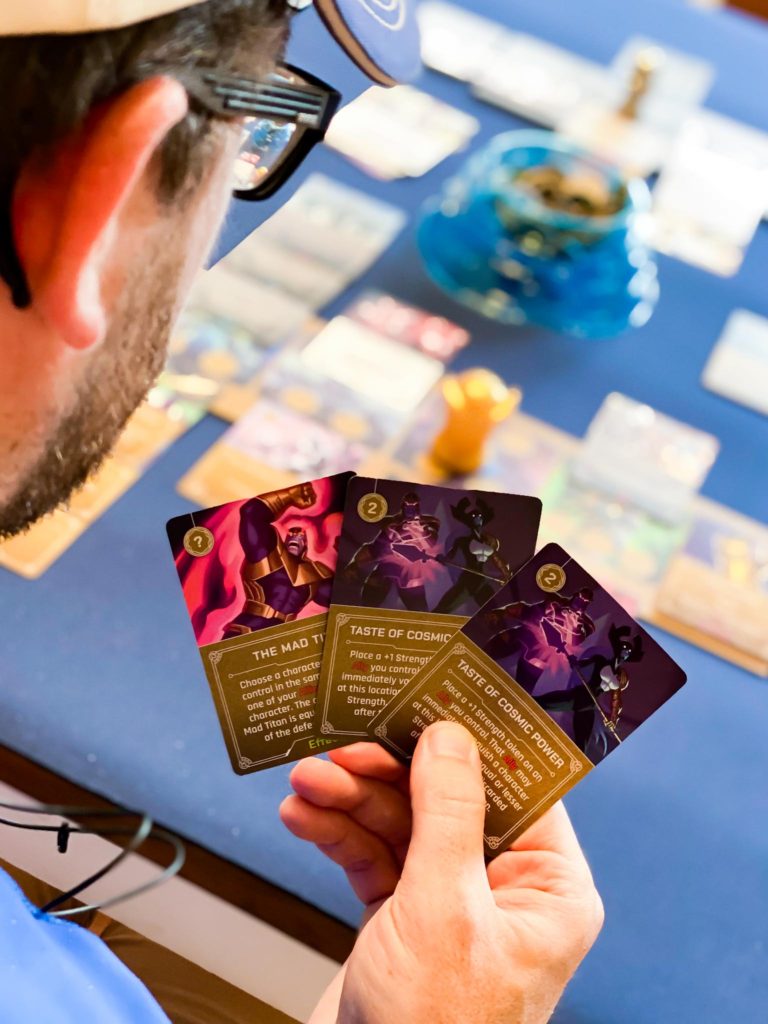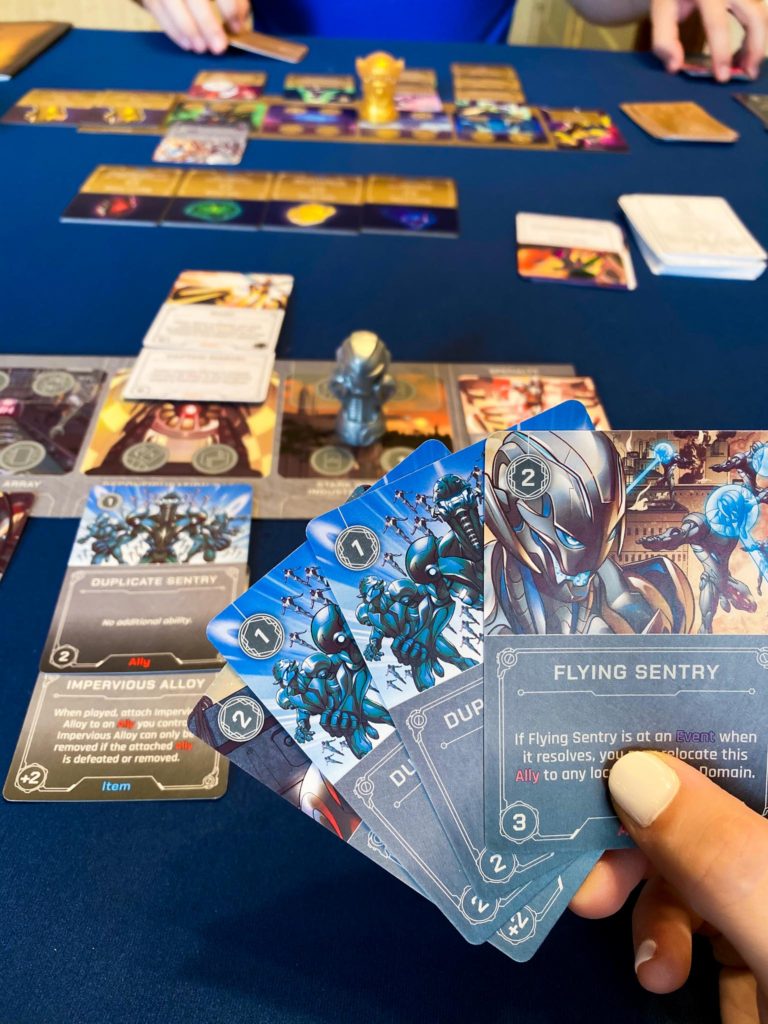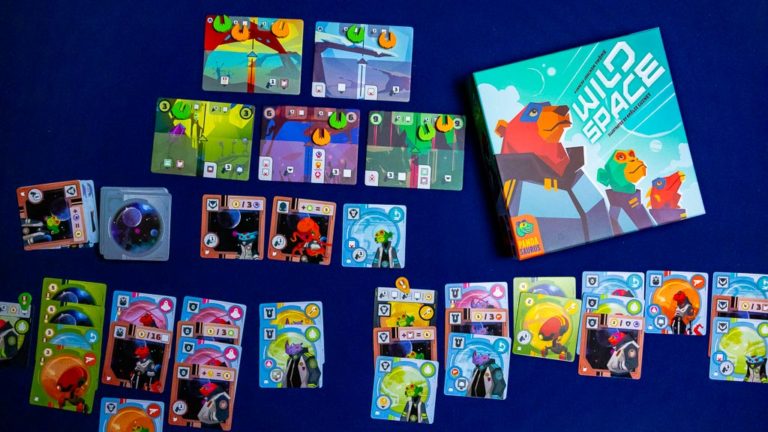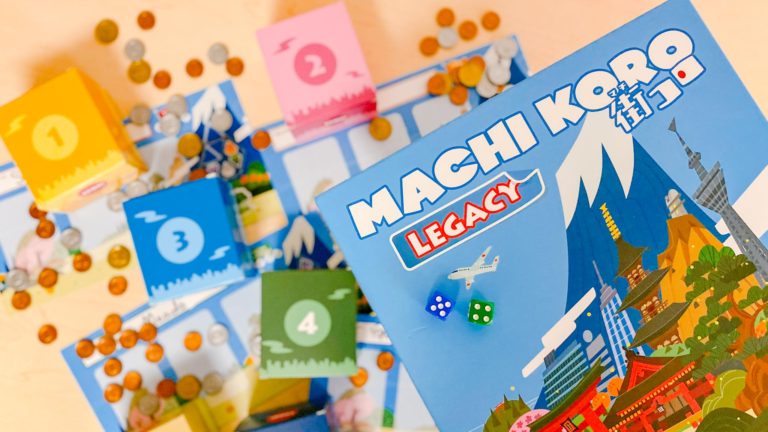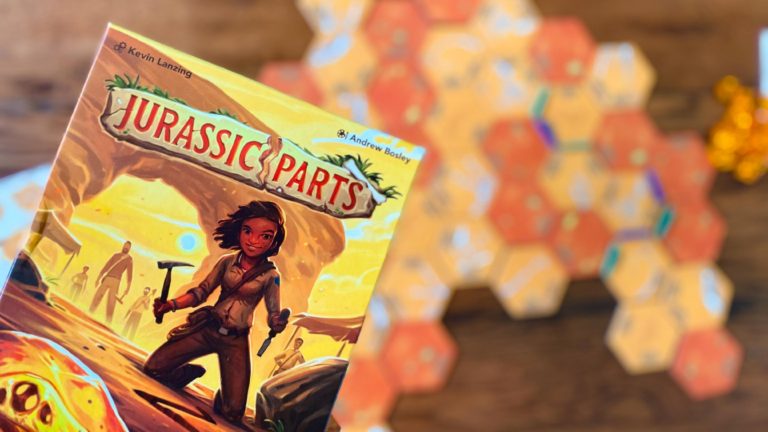On the back of the massive success of Disney Villainous, Marvel Villainous has entered the scene with a large amount of hype.
It’s no secret that we are big fans of Marvel heroes in our household. In this review, we find out if that fandom extends from heroes to villains and let you know if Marvel Villainous lived up to our expectations.
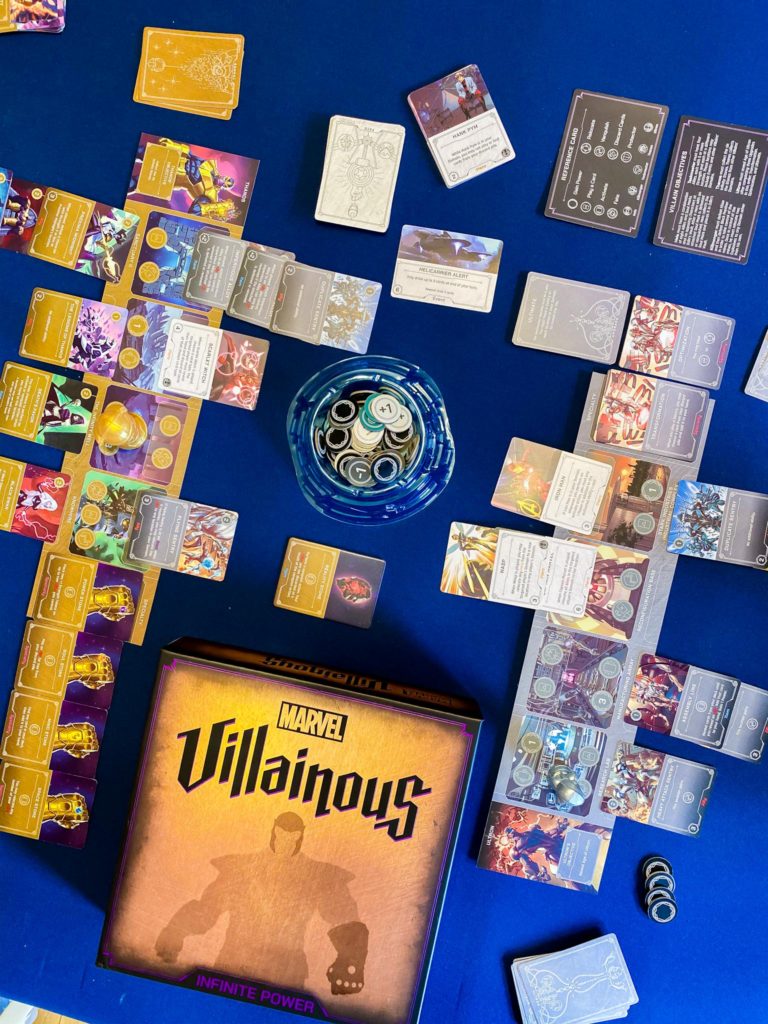
What is Marvel Villainous?
Marvel Villainous is an asymmetrical hand management game where players will each take on the role of a different Marvel villain. Each villain has their own unique win conditions and card abilities. Players will attempt to utilize their hand to fulfill their objective(s) and win the game.
How do you play?
There is a lot to Marvel Villainous, so I will just break the game down into a bare bones overview so we can get to the review.
On your turn, you’ll move your villain token to a new location on your player mat. Each space has specific actions that players can take in any order that they wish. Actions include, but are not limited too: gaining power (the game’s monetary value,) playing cards, activating abilities, vanquishing threats, and drawing from the fate deck among others.
Once you have used all the actions you can or wish to use on your turn, play passes to the next player.
Play continues around and around the table until one player has completed their objective and won the game.
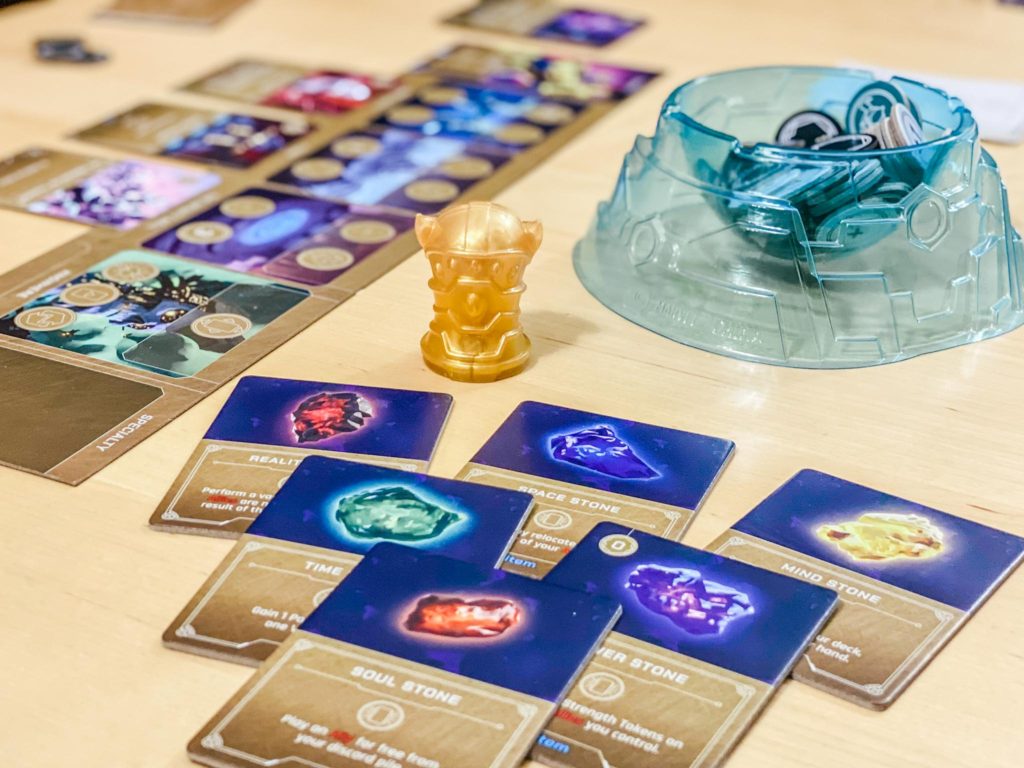
What do we think?
We really really wanted to enjoy this game. Both Adam and myself were pumped and looking forward to this one since it was announced. Which Is why it is so sad to say that we were largely disappointed by it and cannot recommend it. Let me tell you why.
Unclear Rulebook and Card Wordings
First and foremost, I cannot stress enough just how confusing the rulebook is written. During our first play we kept asking ourselves why we were struggling so much to understand how these villains worked. We aren’t new to this style of card play, yet we were consistently stumped on how some cards action worked. In a game like this, there is a heavy amount of reading on the cards. Each card has to be precisely written so it’s understandable and it’s a fine art to get it just right.
In what appears to be an attempt at brevity, many of the cards have such short descriptions of the actions they allow players to take that it leaves a large portion of the card up for interpretation. Usually that’s not a big deal *if* cards are then explained in detail in the rulebook. However, this is not the case. In fact, there are what I can only assume are complete misprints in the rulebook.
For example: Hela and Taskmaster each have cards in their decks that say you can play them from the discard pile. Most cards when discarded are completely out of commission until they are reshuffled and put back into your hand so we again wanted clarification on how this worked. But no clarification is given. In fact, this exact card is even mentioned in Hela’s player booklet for further clarification, except, all they did to clarify was merely reprint the card type in the book which was…unhelpful. (We found the rules explanation on this internet thread)
We searched the internet for answers harder than Thanos searched for the Infinity Stones in the movie
We found ourselves turning to the internet again and again and again to answer game play question and rules clarifications. In doing so, we found that we were not the only ones. In fact, there are massive Reddit feeds and Board Game Geek forums filled with people asking questions and in some cases the game designers themselves just making rulings on very important aspects of the game that are entirely and unjustifiably left out of the rulebook.
Like this one where the designer explains in an online forum that for Ultron to “remove” a sentry from his domain to unlock his objectives (“remove” is a keyword never once mentioned or clarified in the rulebook) the player simply removes the card from their play space on their turn. No action or cost required. Not only is this not explained in the rulebook, but literally no other character has the ability to just let you do something willy nilly without having some sort of cost or activating action required.

Final example I’ll give of this here: Thanos has to collect all of the Infinity Stones to win. To do so, you often have to first place them in another players’ domain to then send out one of his allies to collect it. This seems straight forward and when we first played Thanos we thought we understood it well enough. Then, while looking up a rule for another character, we discovered that you can only give one Infinity Stone to an ally in an opponent’s domain. (Rules explained in this fan made FAQ.) While the rulebook has details for how to attach a stone to an ally, it never once mentions that an ally can only control one Infinity Stone. Again, this seems like a very large rule to have missed including.
In our opinion, there is just simply no way we can recommend a game with a rulebook this unclear and cards this confusing. I do not believe that you should have to consult the internet for how to play the game and should be able to find all of the clarifications you need in the booklets provided. And certainly you should be able to find all of the rules.
If someone buys this game and learns it just from reading the rulebook and characters as written, I cannot see how they could ever find themselves playing it correctly.
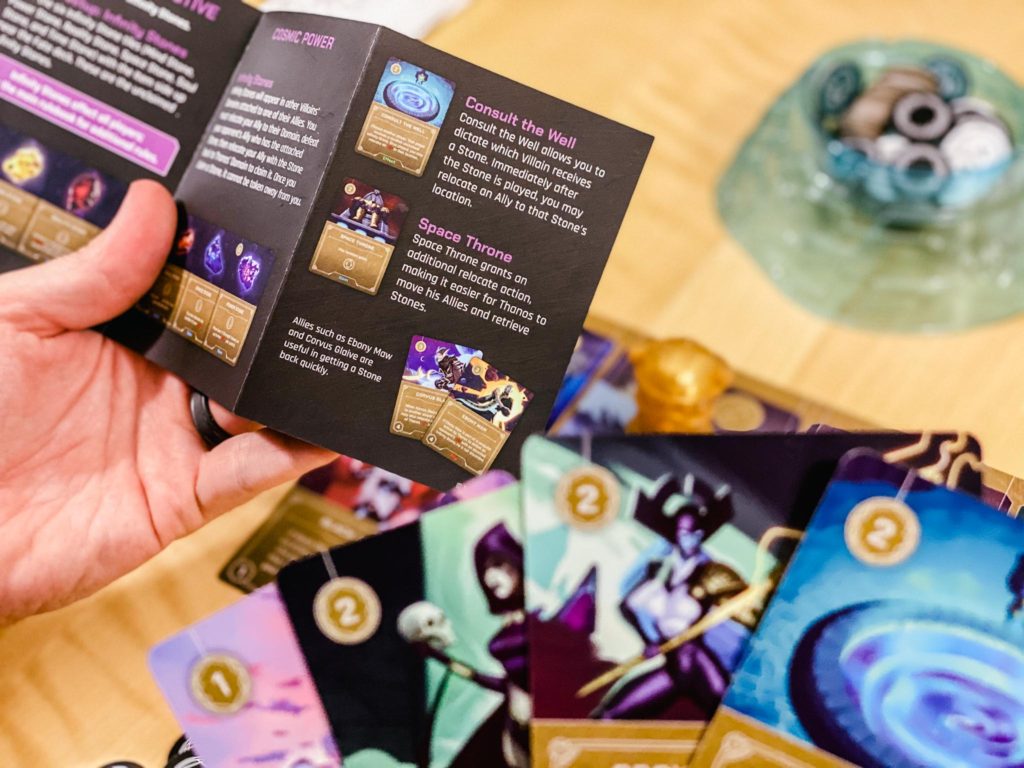
One last thing before moving on: the Fate Deck
If you are familiar with Disney Villainous, you’ll know every character has a fate deck. In Marvel Villainous the fate deck works slightly different. Now, rather than everyone having their own fate deck, there is a communal fate deck. This means that when you are using a fate action, you could pull a card that negatively impacts you, impacts a specific opponent, or hurts the group as a whole. Unless our character specifically needed something from the fate deck, we found no incentive to ever use this action because of the potential for negatively impacting yourself or helping your opponent.
Yet, if you need something from the fate deck and no one else wants to go looking through it with you, you’re going to be in a bit of a pickle because there are a lot of cards in that deck and you could be prevented from having any chance at winning due to where the cards you needed ended up in the shuffle. For instance, when I played Thanos, I could not get the Infinity Stones to come out of the deck. After a long slog to a loss, we looked through the deck and found three of them in the bottom 10 cards. Fate was definitely against me that game.
I wish the deck itself would have been smaller, or that they would have kept with individual decks and found a different way to incorporate cards that impacted the groups forcing everyone to work together.
Let’s break the game down into some categories now and see where things did work.
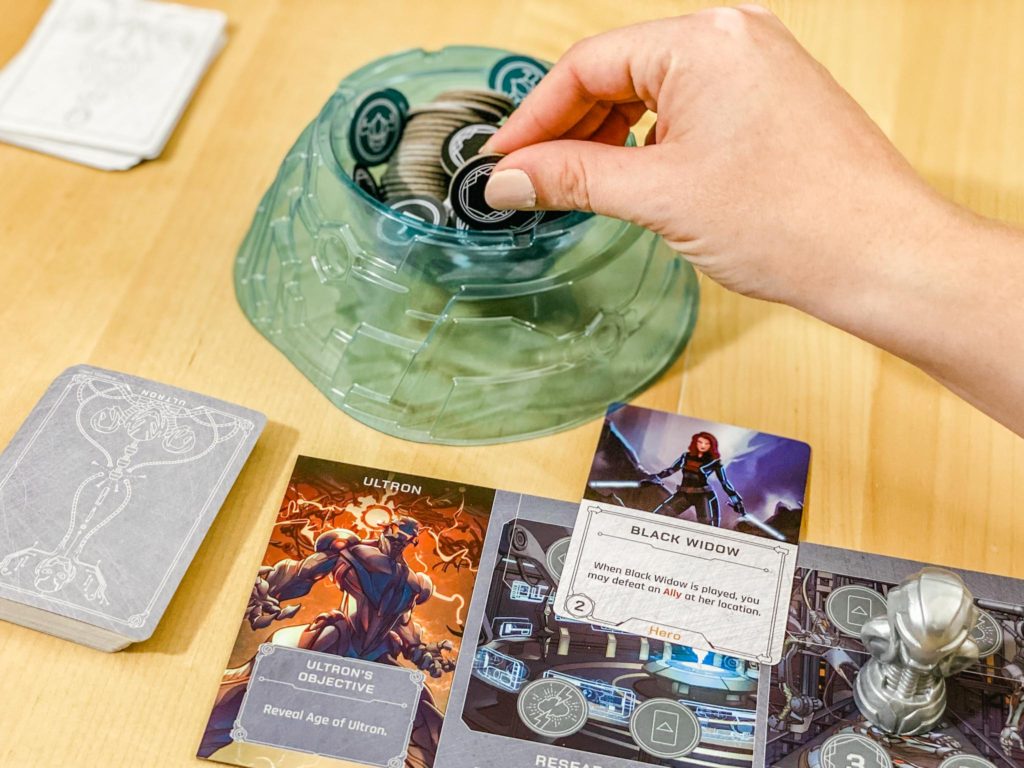
Components
Everything looks fantastic in Marvel Villainous. I don’t really have any complaints on the components aesthetic wise.
The player pawns look nice in play and feel great in hand. We also really enjoy the illustrations for each character and their cards.
The game looks good.
Theme
Whether it’s Disney or Marvel, I love the way Villainous incorporates the theme into the game. Each character feels unique and provides players a fun challenge to both succeed with or thwart.
For this Marvel version, I wish that there was a bit more of the theme put into the win conditions. Rather than just having someone win automatically, it would be great if players were given one final chance to stop them. For instance, Thanos wins the moment he collects all infinity stones. I wish that rather than an instant win, he would have to make it to his next turn where he would then have to “snap” to win.
Same with Killmonger. Rather than just winning the moment he places the second bomb on someone’s territory, it would be great if he had to “detonate” them on his next turn, thus giving players one last chance to remove bombs and stop him.
However, the automatic win conditions do speed up the game and bring a bit more ease of play than was found in the original Disney Villainous.
How does it play with two?
We think Marvel Villainous plays only okay at two players. This is a game where for best results you probably want three or four players so there are more opportunities to work through the fate deck and more opponents to target.
That’s not to say that you can’t play it with two. We just found there were certain times where having more players would have been helpful.
The flip side though is that more players means more time to play. The game says it takes about 20 minutes per player which is relatively accurate though it can easily take more. (Our 2 player games typically ended up taking about an hour or more depending on which characters we were playing.) We find that Marvel Villainous begins to wear out its welcome at the 40 minute mark for our group so playing it with a full four players isn’t something that necessarily benefits every aspect of the game. There can be a lot of downtime between turns which means a lot of time to let your mind wander and get bored.
Can kids play?
I’d recommend passing on Marvel Villainous (or Disney Villainous) for kids any younger than 12 or 13.
These games are exceptionally reading heavy and the strategy is very difficult for younger players to grasp. In fact, even some older players might struggle with it.
Despite looking like an entry level game, there is a lot going on. You not only have to be able to understand how your character works and the strategy required to win, but you also need to have a good understanding of how every other character in play works as well so you know what to expect and how to best stop your opponents from utilizing their abilities.
All this makes for a bit of an overwhelming experience for younger kids.
If you are looking for a great Marvel game for younger kids, see below for my recommendations!
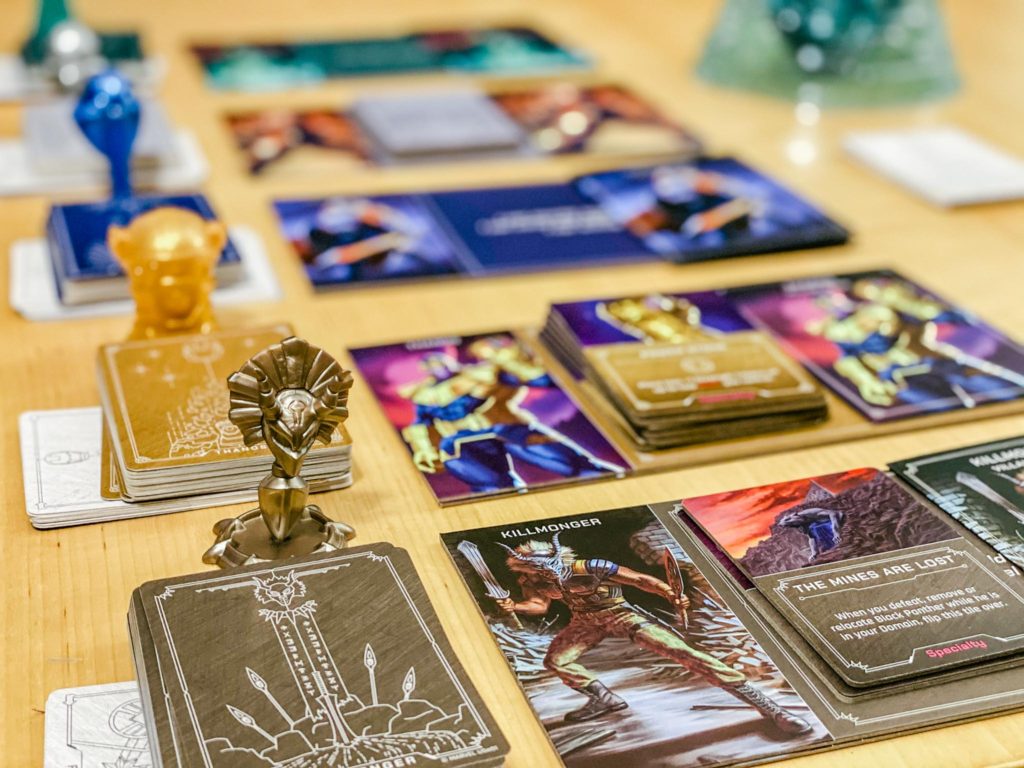
Summary
We greeted Marvel Villainous with excited expectations. We love a good card game and can’t say no to anything Marvel themed. With that in mind, we are sorry that due to the unclear/unfinished rulebook and confusing card wordings that lead to a frustrating play experience, we cannot at this time recommend Marvel Villainous.
While the game looks good component wise and on paper has what should be a really fun theme, it just doesn’t come together. But the potential is there, so I hope in the future it is given a reprint with a clear rulebook, detailed card explanations, and a few tweaks to make the game play more consistent.
If you are mostly interested in Marvel Villainous for the Marvel theme, I recommend you check out Marvel Legendary (Our very favorite: review here,) Marvel United (Our new favorite choice for the family,) or 5 Minute Marvel (perfect for those with younger players.)
While this one missed the mark for us, we are still excited about the games Ravensburger has to offer and what might be in store in the future. Some of our favorite titles include:
Castles of Burgundy (One of Adam’s all-time top games!)
The Quest for Eldorado (We’re always down to play this!)
Labyrinth (one of kids’ favorite)
Las Vegas (one of our most played games and a favorite of my father!)
A special thank you to our friends at Ravensburger for sending us a copy of Marvel Villainous for review. As always our thoughts and opinions are our own.
Game Info:
Title: Marvel Villainous: Infinite Power
2-4 Players Ages 12+
Designer: Prospero Hall
Publisher: Ravensburger


